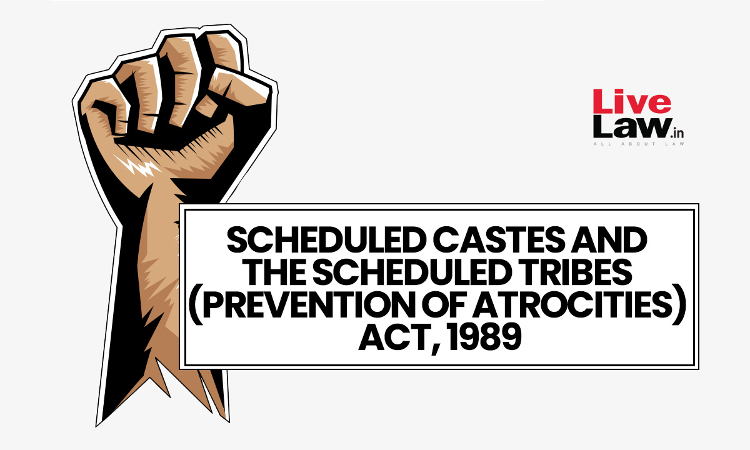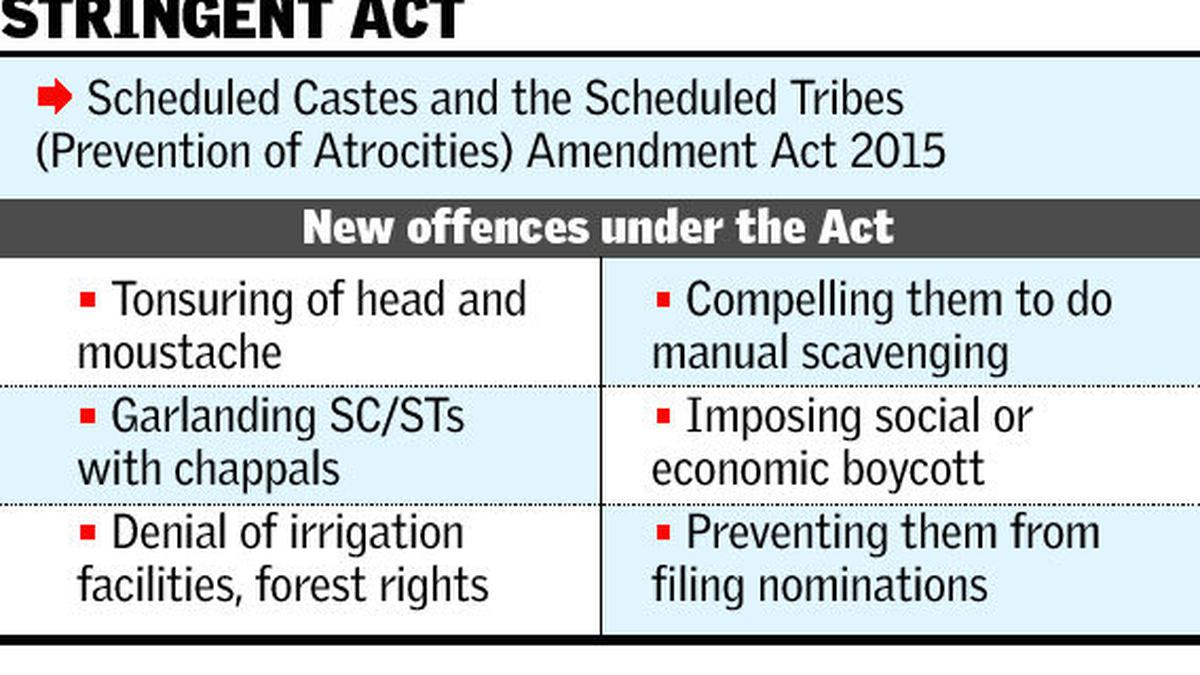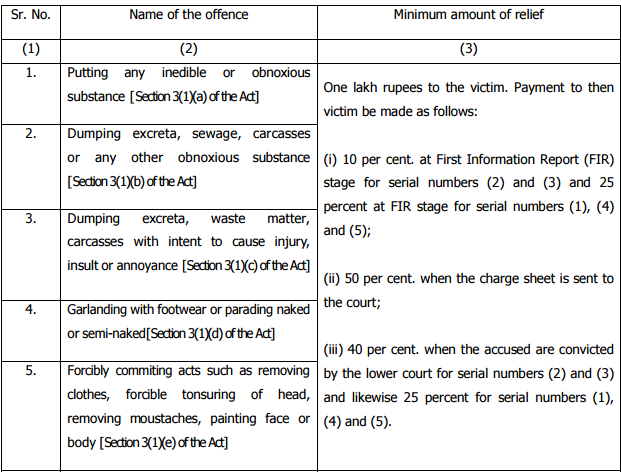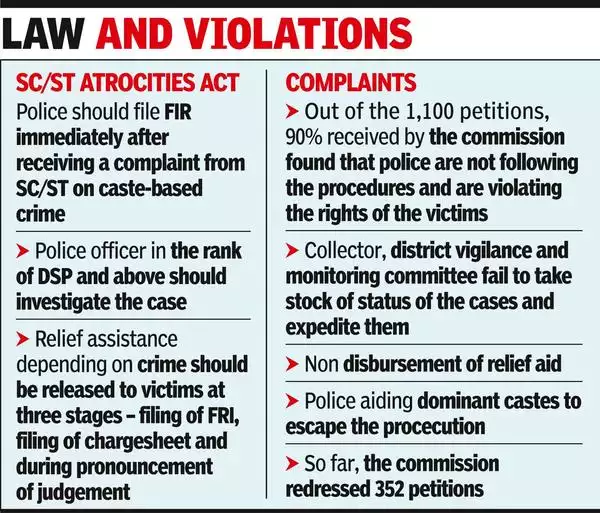Free Courses Sale ends Soon, Get It Now


Free Courses Sale ends Soon, Get It Now



Copyright infringement not intended
Picture Courtesy: https://www.livelaw.in/high-court/jharkhand-high-court/jharkhand-high-court-scst-act-misuse-marginalized-communities-238274
Context: The Allahabad High Court's recent ruling on the interpretation of section 3(1)(r) of the Scheduled Castes and Scheduled Tribes (Prevention of Atrocities) Act, 1989 has significant implications for cases involving alleged insults based on caste identity.
Details
Scheduled Castes and Scheduled Tribes (Prevention of Atrocities) Act
Definition of Scheduled Castes (SC) and Scheduled Tribes (ST)
Purpose of the Act
|
The Act aims to address the historical injustices and discrimination faced by these communities and promote their social, economic, and political empowerment. |
Prohibited Acts
Offences against SCs/STs

Procedure for Filing Complaints
|
Concern ●Failure to record complaints: Public servants failing to register complaints filed by members of SC or ST communities regarding atrocities committed against them. ●Intentional delay in investigation: Deliberately prolonging or delaying the investigation process of cases involving atrocities against SC or ST community members. ●Failure to prevent atrocities: Neglecting to take necessary measures to prevent atrocities against members of SC or ST communities within their jurisdiction. |
Special Courts
Penalties
|
The Act mandates the payment of compensation to victims of atrocities. This compensation aims to provide relief to the victims and assist them in recovering from the physical, emotional, and financial harm caused by the offence. |

Special Provisions
Landmark Judgments on the SC/ST Act
Enforcement and Implementation

Impact of the Act
Way Forward
Conclusion
Source:
|
PRACTICE QUESTION Q. What are the root causes of the continued marginalisation of certain communities in India, such as Dalits, Adivasis, and religious minorities, despite constitutional safeguards and various government initiatives? Analyse the complex interplay of social, economic, political, and cultural factors that promote this marginalisation. |
© 2024 iasgyan. All right reserved